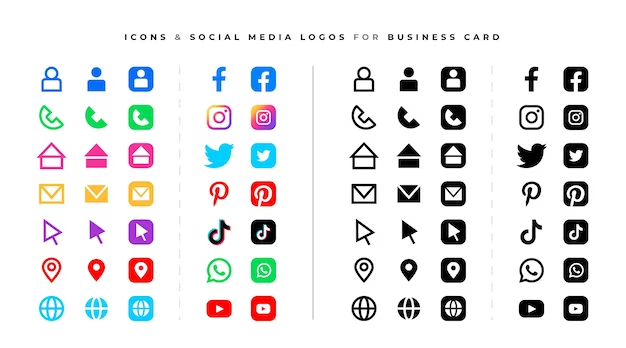If you are looking for a way to grow your online presence and increase your brand awareness. You might want to consider hiring a content marketer. But what is a content marketer, and what do they do? In this article, we will answer these questions. We’ll also explain why content marketing is one of the most effective and affordable digital marketing strategies today.
What is Content Marketing?
Content marketing involves creating and distributing valuable content to a specific audience. The content can be in various formats. Such as blog posts, videos, podcasts, infographics, ebooks, webinars, and more.
The content is not meant to sell or promote a product or service. But rather to educate, inform, entertain, or inspire the audience. The goal of content marketing is to build loyalty with the audience. And to influence their behavior and decisions positively.
Content marketing is different from traditional advertising. Which is more interruptive, persuasive, and transactional. Content marketing is more subtle, helpful, and relational. Content marketing is also more cost-effective. It can generate more leads, conversions, and sales than advertising. All while spending less money.
According to a study by Demand Metric, content marketing costs 62% less than traditional marketing. And a fun fact, it generates about 3 times as many leads.
What is a Content Marketer?
A content marketer is a professional who plans, creates, and manages content marketing campaigns for a business or an organization. A content marketer handles the following tasks:
- Conducting market research and audience analysis to understand the needs, interests, and pain points of the target audience.
- Developing a content strategy and a content calendar that aligns with the business goals and the audience’s expectations.
- Creating high-quality, original, and engaging content that provides value to the audience and showcases the brand’s expertise and personality.
- Distributing and promoting the content across various channels, such as the website, blog, social media, email, and online platforms.
- Measuring and analyzing the performance and impact of the content using various metrics and tools, such as traffic, engagement, leads, conversions, and sales.
- Optimizing and improving the content based on the feedback and the data.
A content marketer needs to have a combination of skills and abilities, such as:
Writing and Editing Skills
A content marketer needs to be able to write clear, concise, and compelling content. That captures the attention and interest of the audience. They also need to be able to edit and proofread their own and others’ content for any errors.
Design and Multimedia Skills
A content marketer needs to be able to create and use different types of content. Such as images, videos, podcasts, infographics, and more. They also need to have a sense of design and aesthetics. They should also be able to use various tools and software, such as Canva, Behance, and Slidesgo.
Research and Analytical Skills
A content marketer needs to be able to conduct thorough and accurate research on the market. The audience, the competitors, and the industry trends. They also need to be able to analyze and interpret data and statistics. So they could be used to support their content and their decisions.
Marketing and SEO Skills
A content marketer needs to be able to apply the principles and best practices of marketing and SEO to their content.
They need to be able to identify and use the right keywords. Within headlines, tags, and meta descriptions to optimize their content for search engines. They also need to be able to use various tools and platforms. Such as Bing, BuzzSumo, and Hunter, to find and reach their target audience and influencers.
Communication and Collaboration Skills
A content marketer needs to be able to collaborate with different stakeholders. Such as the clients, the team, the management, and the audience. They need to be able to listen, understand, and respond to the needs and feedback of each party. They also need to be able to work as part of a team and manage their time and resources in an efficient way.
Why do you Need a Content Marketer?
They can help you achieve various benefits for your business or organization, such as:
Increase Your Online Visibility and Authority
By creating and sharing valuable and relevant content, you can attract more visitors to your website, blog, and social media pages. You can also rank higher on search engines and generate more organic traffic. Moreover, you can establish yourself as an expert and a leader in your field. Gaining the trust and respect of your audience and your peers.
Build and Nurture Relationships With Your Audience
By creating and sharing engaging and entertaining content, you can connect and interact with your audience on a deeper level. You can also provide them with useful information and solutions. Which can help them solve their problems or achieve their goals. By doing so, you can create a loyal and satisfied customer base that will keep coming back for more.
Generate and Convert More Leads and Sales
By sharing educational content, you can influence the decisions of your audience. You can also guide them through the buyer’s journey. From awareness to consideration to decision.
By doing so, you can generate more qualified leads and convert them into paying customers. You can also increase your customer retention and loyalty. And encourage repeat purchases and referrals.
How to Hire a Content Marketer?
If you’re convinced, you might be wondering how to find and hire one. Here are some tips and steps to help you with the process:
Define Your Goals and Expectations
Before you start looking for a content marketer, you need to have a clear idea of what you want to achieve with your campaigns and what you expect from your content marketer. You need to set specific, measurable, achievable, relevant, and time-bound (SMART) goals, and communicate them to your potential candidates.
Create a Job Description and a Job Posting
After you have defined your goals and expectations, you need to create a job description. And a job posting that outlines the responsibilities of the content marketer. The posting should also list all the skills and qualifications you are looking for.
You also need to include the benefits and the compensation you are offering. And the application process along with the deadline. You can use online platforms and directories. Such as Indeed, LinkedIn, and Content Marketing Institute, to post your job. That way you can reach a wider and relevant pool of candidates.
Screen and Interview the Candidates
Once you have received the applications, you need to interview the candidates. Until you find the best fit for your role and your business. You need to review their resumes, portfolios, and references. Also assess their writing and design skills, their research and analytical skills, their marketing and SEO skills, and their communication and collaboration skills.
You also need to ask them behavioral and situational questions. Such as how they would plan, create, and manage a content marketing campaign. How they would measure and optimize the performance and impact of their content. And how they would handle feedback and challenges.
Hire and Onboard the Content Marketer
After selecting the best candidate, you need to hire and onboard them to your business. You need to send them a job offer letter and a contract. Also, negotiate the terms and conditions.
You also need to provide them with the necessary tools and resources. Such as access to your website, blog, social media, email, and online platforms. You also need to introduce them to your team, your clients, and your audience. Don’t forget to explain your brand’s vision, mission, values, and voice. So, the newcomers know exactly what they are working for.
You also need to set clear expectations and deadlines. And provide regular feedback and support.
How to Improve Your Content Marketing Skills
If you are already a content marketer, or you want to become one, you might be wondering how to improve your content marketing skills and stay ahead of the competition. Content marketing is a dynamic and evolving field. You need to constantly learn and update your knowledge and abilities. Here are some tips and resources to help you improve your content marketing skills:
Read the Best Content Marketing Blogs and Websites
You can learn a lot from the experts and the leaders in the industry. Who share their insights, tips, trends, and best practices on their blogs and websites. Some of the best content marketing blogs and websites are Content Marketing Institute, HubSpot, Copyblogger, and Neil Patel.
Take Online Courses and Certifications
You can also improve your skills by taking online courses and certifications. These courses cover various aspects and topics of content marketing. Such as content strategy, content creation, content distribution, content optimization, content measurement, and more. Some of the best online courses and certifications are Google Digital Garage, HubSpot Academy, Coursera, and Udemy.
Join Online Communities and Forums
You can also improve by joining online communities and forums. Where you can interact and network with other content marketers. You can ask questions, share ideas, get feedback, and learn from each other. Some of the best online communities and forums are Reddit, Quora, LinkedIn, and Facebook.
Attend Online Events and Webinars
You can also improve your content marketing skills by attending online events and webinars that feature content marketing experts and speakers, who share their knowledge, experience, and advice on various content marketing topics and issues. Some of the best online events and webinars are Content Marketing World, MozCon, Social Media Marketing World, and ContentTECH Summit.
Practice and Experiment
Finally, you can improve your content marketing skills by practicing and experimenting with your content marketing campaigns. You can try new formats, channels, tools, and techniques, and see what works and what doesn’t.
Moreover, you can measure and analyze your results, and learn from your mistakes and successes. You can also ask for feedback and suggestions from your audience, your clients, and your peers, and use them to improve your content and your skills.
Synopsis
A content marketer is a valuable asset for any business or organization that wants to grow their online presence, attract more customers, and increase their brand awareness. A content marketer can help you create and distribute valuable, relevant, and engaging content that can build trust, credibility, and loyalty with your audience, and positively influence their behavior and decisions.
If you need help with your content marketing or web designing, you can contact us for expert web design services. We have a team of experts who can help you create stunning and successful content for your website, blog, or social media. Contact us today and get a free quote.
FAQs – Frequently Asked Questions
1. How can I Enhance my Content Marketing Skills?
To enhance your content marketing skills, consider reading and following reputable content marketing blogs and websites like Content Marketing Institute, HubSpot, Copyblogger, and Neil Patel. They provide valuable insights, tips, and industry best practices.
2. Are There Any Recommended Online Courses for Improving Content Marketing Skills?
Certainly! Explore online courses and certifications from platforms like Google Digital Garage, HubSpot Academy, Coursera, and Udemy. These cover diverse aspects of content marketing, including strategy, creation, distribution, optimization, and measurement.
3. How can Joining Online Communities Benefit Marketing Skills?
Joining online communities such as Reddit, Quora, LinkedIn, and Facebook allows you to interact with fellow content marketers, ask questions, share ideas, receive feedback, and learn from each other’s experiences, contributing to the improvement of your skills.
4. What are the Benefits of Attending Online Events and Webinars for Content Marketing?
Attending online events like Content Marketing World, MozCon, Social Media Marketing World, and ContentTECH Summit provides opportunities to learn from content marketing experts. They share knowledge, experiences, and advice on various content marketing topics, contributing to your skill enhancement.
5. How can Practicing and Experimenting Contribute to Improving Content Marketing Skills?
Engaging in your own content marketing campaigns, experimenting with different formats, channels, tools, and techniques, and analyzing the results helps you understand what works and what doesn’t. Learning from both mistakes and successes is crucial for skill improvement.
6. Can you Recommend Some Reliable Resources for Staying Updated on Content Marketing Trends?
To stay updated on content marketing trends, regularly check trusted sources such as Content Marketing Institute, HubSpot, Copyblogger, and Neil Patel. These platforms often publish insights, trends, and best practices that can inform your strategies.
7. Are There Any Prerequisites for Taking Online Courses to Improve Content Marketing Skills?
Most online courses cater to various skill levels, so there are usually no strict prerequisites. However, having a basic understanding of content marketing concepts may enhance your learning experience in advanced courses.
8. How can I Measure the Effectiveness of my Content Marketing Efforts?
To measure the effectiveness of your content marketing efforts, track key performance indicators (KPIs) such as website traffic, engagement metrics, conversion rates, and social media interactions. Use analytics tools to gain insights into the impact of your campaigns.
9. Is it Advisable to Seek Feedback From the Audience, Clients, and Peers for Skill Improvement?
Absolutely. Seeking feedback from your audience, clients, and peers provides valuable insights into the effectiveness of your content. Constructive feedback helps you identify areas for improvement and refine your content marketing strategies and skills.
10. How Often Should I Update my Content Marketing Knowledge to Stay Competitive?
Content marketing is a dynamic field, so staying competitive requires continuous learning. Aim to update your knowledge regularly by following industry blogs, participating in online communities, and attending events at least quarterly to stay informed about the latest trends and strategies.


































